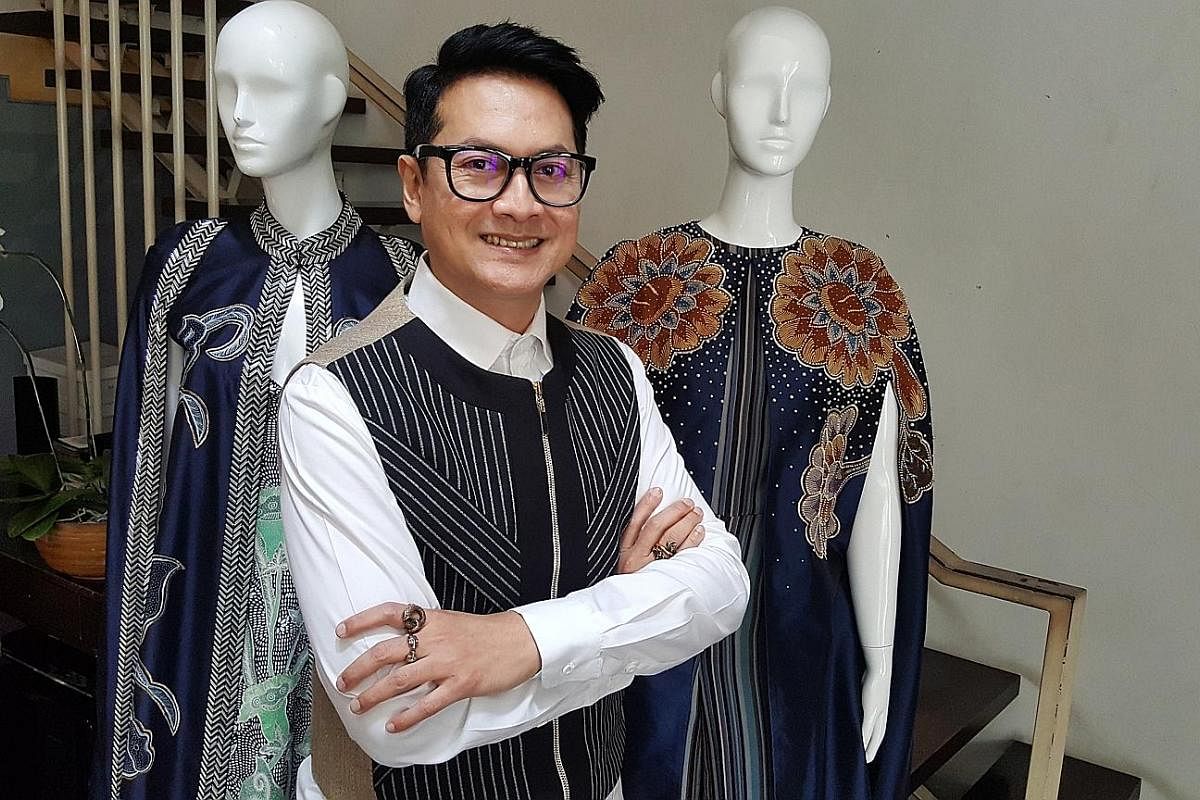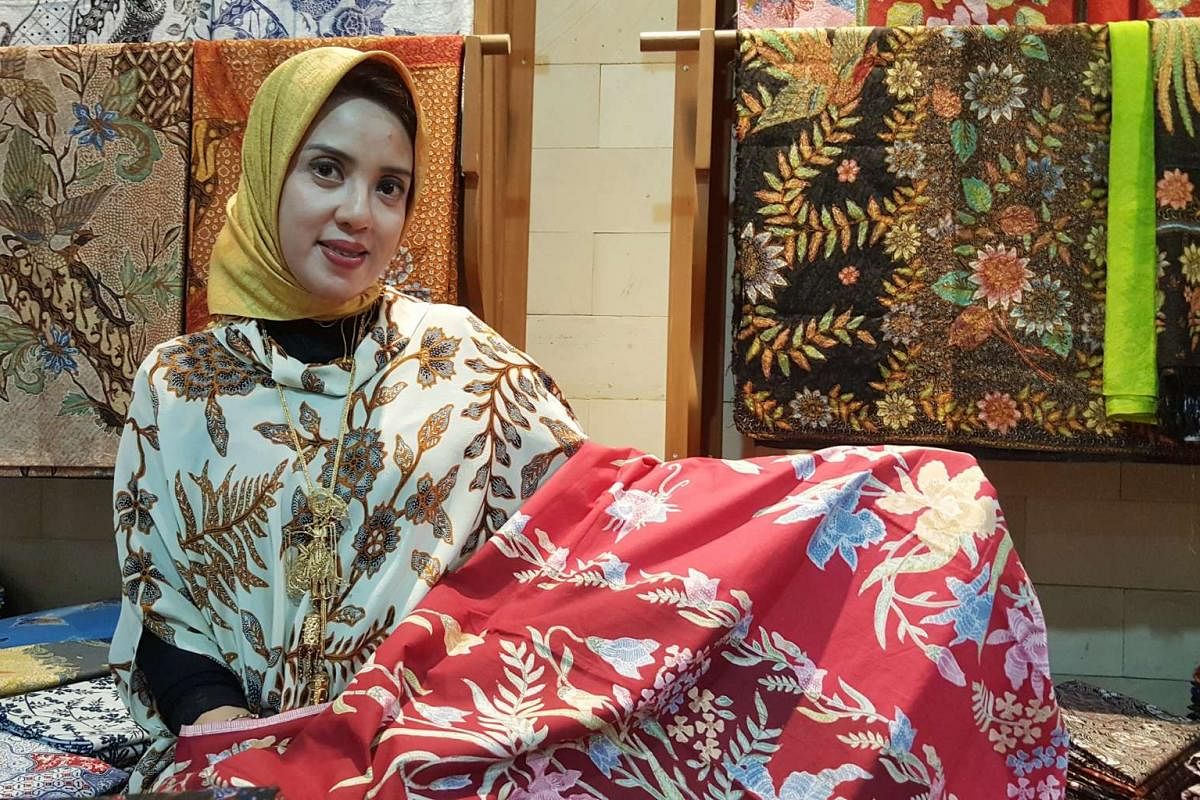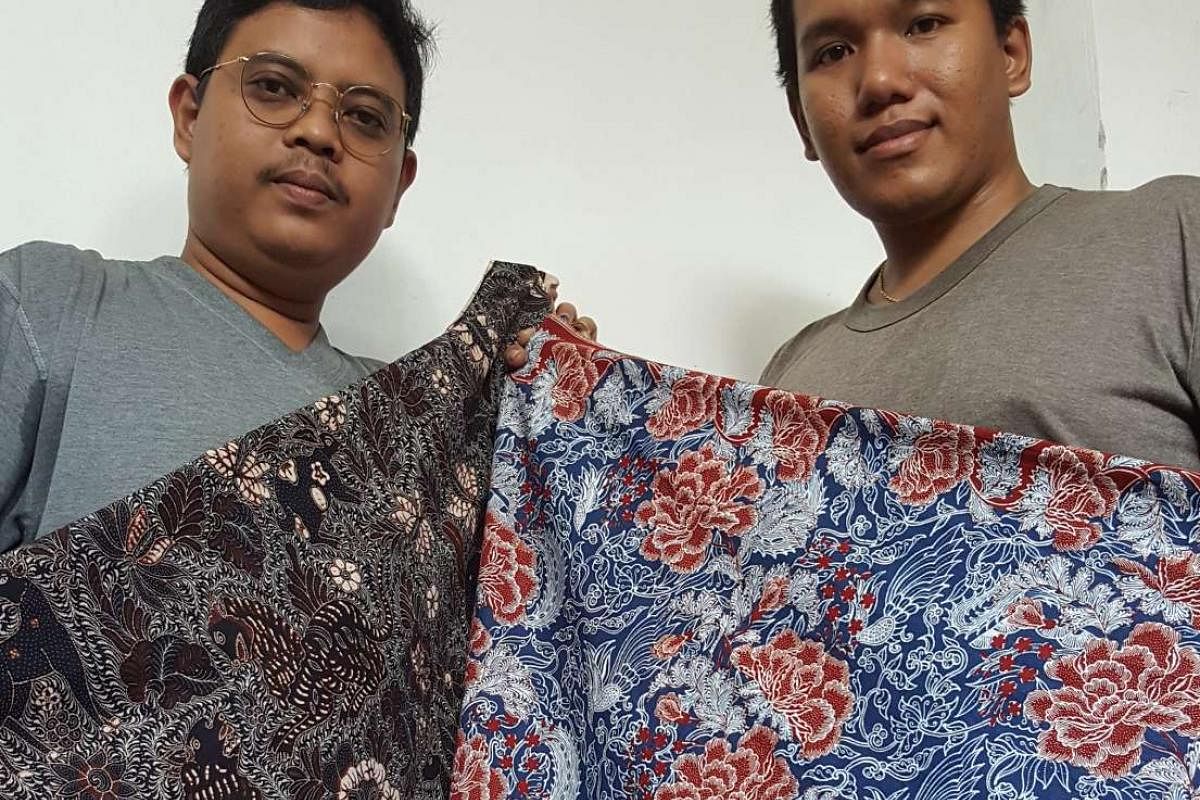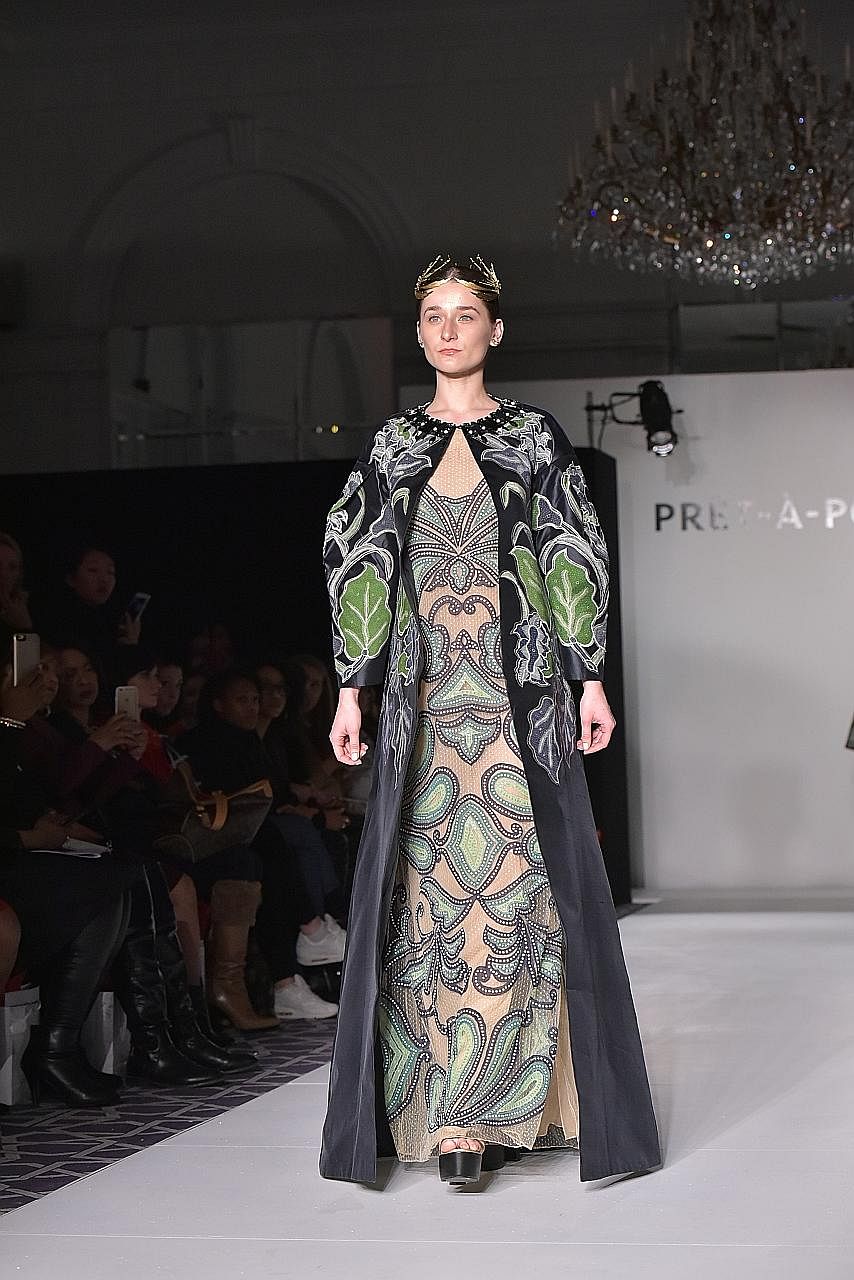-
Batik ABC
-
Batik's origins are unclear, but it is believed to have been introduced to Java from India around the 6th century, and was once worn exclusively by Javanese kings and royalty. It became popular wear in Indonesia in the 1800s. Since then, it has evolved in style, motif and colour to reflect the influence of foreign cultures. Arabic calligraphy, European flower bouquets, the Chinese phoenix and Japanese cherry blossoms have all taken pride of place in batik designs. Here are some common terms unique to the art form in Indonesia.
Batik Indonesia: In the 1950s, former president Sukarno pushed for a national batik style to celebrate the end of Dutch rule. Batik Indonesia, which marries classic batik styles with brighter colours, became one of the symbols of a united nation.
Batik tulis: Motifs are drawn by hand using a pen-like tool called a canting.
Batik cap: Patterns are hand-stamped on fabric using copper blocks. Such fabric is cheaper and less valued.
Batik pesisir: Colourful batik from the coastal areas.
Batik keraton: Brown is the base colour for batik keraton (royal batik), which is dominated by blue, yellow and white. Every motif has a philosophical meaning.
Field notes
Batty about batik
Enterprising young Indonesian artists are keeping this centuries-old craft alive by taking it to the world stage, where stars and statesmen alike are falling in love with it





Seated on low stools, the women dip tiny copper pens into melted wax, blow lightly over the pen tips and, with steady hands, drip the molten liquid over intricate patterns pencilled onto white fabric.
In the backyard of the brick house under a high thatched roof in Sragen regency, Central Java, the men coat the waxed cloth in organic dyes of indigo blue or soga brown, and then boil the cloth to remove the wax.
They repeat the process multiple times, over a span of two months to a few years, waxing other parts of the patterns and dyeing them in different colours to create vivid designs.
The product of their labour is batik - a centuries-old textile tradition practised from Africa to China but which Indonesia has claimed as a national heritage and elevated to an art form.
"The work is slow and tedious, but this is Indonesia's heritage, our national identity. It must not die," said 38-year-old Tukim, a batik maker since she was a teenager.
Far from dying, batik - derived from the Javanese words amba (write) and titik (dot) - is thriving. It is seeing a renaissance of sorts, with designers putting batik creations on the world's runways, updating near-extinct designs to suit current fashion trends, and even using technology to produce new patterns.

The long-forgotten Batik Kudus, which features motifs from Kudus, a city on Java's north coast, found global fame last year after well-known Indonesian fashion designer Denny Wirawan took it to New York Fashion Week.
Accompanied by dazzling strobe lights and pulsating Javanese gamelan music, his lanky models strutted down the runway in silk capes and long coats bearing bold geometric prints juxtaposed with motifs of lotus flowers, cattleya orchids and beras kecer (scattered rice).
Batik Kudus came close to vanishing when artisans abandoned the craft to work in the booming tobacco industry in the 1950s. By 2010, fewer than 20 were left in the city.
Mr Denny, 50, told The Straits Times he wanted to help save less prominent patterns from dying out by giving them a modern twist.
But he warned against overdoing it, noting: "Batik has its own special characteristics and looks nice on its own, but it must keep up with current international trends. The challenge is not to become too edgy or risk looking like a fashion freak."
REVIVING AN OLD FAVOURITE
Local designers are consistently taking batik to the world stage, keeping it up-to-date and relevant.
Among the earliest trailblazers was the late Iwan Tirta, a celebrated batik artist whose creations impressed visiting dignitaries including Queen Elizabeth II and former United States presidents Ronald Reagan and Bill Clinton.
One of Mr Iwan's biggest fans was former South African president Nelson Mandela, who became a batik convert after his visit to Indonesia in 1998. Mr Mandela wore batik so often that the attire became known as the "Madiba shirt" in his country.
Indonesian batik has not only caught the eye of politicians, but also dressed Hollywood stars such as Jessica Alba, Paris Hilton and Reese Witherspoon.
The Walt Disney Company, hoping to tap batik's popularity in Indonesia, teamed up with prominent local manufacturer Batik Keris in 2012 to produce colourful children's batik clothes sporting Disney characters such as Mickey Mouse and Donald Duck. Traditional motifs were also highlighted, such as sekar jagad (flowers of the universe) and truntum (a floral motif with black as the primary colour, symbolising the entwining love of husband and wife).
INTANGIBLE HERITAGE
There are some 3,000 batik patterns recorded in Indonesia, from the vibrant floral and animal motifs of Java's northern coast to the sombre geometric forms of central Java.
Acknowledging its long history and impact on local culture, Unesco named Indonesian batik an Intangible Cultural Heritage in 2009. Indonesia has since declared Oct 2 as Hari Batik Nasional or Batik Day, and encouraged batik to be worn that day as well as on Fridays.
"I'm a fan of batik," President Joko Widodo posted on Facebook on Batik Day two years ago. "Batik is a wealth of culture and an economic driver for some Indonesians... Batik should become a world-class creative industry."
Mr Joko himself hails from Solo, a famous batik-making city in Java, and he once revealed that he had "hundreds" in his collection.
But no one bats an eyelid. After all, these must-have garments are available in an endless variety of styles and colours, costing a few dollars for a factory-printed cotton shirt and a few thousand for a hand-drawn silk kain panjang (a long cloth of 2m).
Nurse Sukimin, 50, owns hundreds of batik pants, dresses and sarongs. "I wear them to work, weddings, funerals," she told The Straits Times. "Don't you dare call yourself an Indonesian if you don't own at least one batik item."
Besides being a wardrobe staple, batik holds deep ritual significance. Babies are carried in slings with special motifs for luck; the dead are shrouded in funerary batik to ease their return to the afterlife.
Closer to home, batik also commands a strong following in neighbouring Singapore.
Solo-based firm Riana Kesuma has been supplying ready-made batik apparel to Singapore's Metro department stores since last year. Ms Riana Kusuma, who runs the 20-year-old family business, designs the patterns and hires experienced artists such as those in Sragen to produce the batik.
Batik has turned her into an unlikely weatherman.
"The stronger the sun, the brighter the colours. To make sure I get the same shade of red for a bulk order, I ask the workers 'how's the weather today?'," she said with a laugh. "It takes a long time to make a piece of batik, and a spoilt piece is wasted time and money."
THE SCIENCE OF AN ART FORM
A decade ago, Mr Aji Setyowijaya decided he was going to make a career out of making batik. He had stumbled on a niche market after posting a photograph of his grandmother's tattered vintage sarong on Facebook and receiving an offer for it.
The Yogyakarta-based artist reproduces and sells batik featuring vintage motifs, including ones of wild boars and elephants, and classic motifs of parangs (done in rows of S-shaped dagger-like prints), once used exclusively by royal courts.
"I had no idea how to make batik, so I read books and watched YouTube videos and then practised on small squares of fabric," Mr Aji, now 28, told The Straits Times.
He roped in an animation graduate friend, Mr Yahya Adib Sutikno, and they now work with 25 home-based artisans to produce 10 pieces of kain panjang a month.
Mr Yahya, also 28, said: "Our waiting list is long but you can't rush art. I've got a lot of auntie fans on Facebook asking me when their batik will be ready. I say 'patience, patience'."
Over in Bandung, West Java, the innovative trio behind Batik Fractal are focused on the science rather than the art of making batik.
In 2007, entrepreneurs Muhammad Lukman, Nancy Margried Panjaitan and Yun Hariadi developed a Photoshop-like software called jbatik, which uses a fractal formula (a type of mathematical equation) to produce repeated batik motifs.
Using the desktop application's three-dimensional pattern generator, people simply download 10 basic batik patterns and tweak them as desired. Then, the final version is sent to professional craftsmen to produce on cotton or silk.
The application has undergone four revisions and been downloaded 3,000 times so far, said Mr Lukman, an architecture graduate from the Bandung Institute of Technology.
Last year, jbatik was a semi-finalist in a competition for science and technology entrepreneurs organised by the US government's Global Innovation through Science and Technology initiative (GIST).
"This software not only cuts the time needed in designing batik, but also allows people to visualise the end-product and make changes until they are satisfied," he told The Straits Times.
He hopes technological innovations such as jbatik can attract the young to join the batik industry.
"Many batik artists are older folks. The younger generation is not too interested; this tool is compatible with their era," he added. "Technology does not break tradition - it can maintain and strengthen tradition."
Join ST's Telegram channel and get the latest breaking news delivered to you.
A version of this article appeared in the print edition of The Straits Times on July 01, 2017, with the headline Batty about batik. Subscribe
